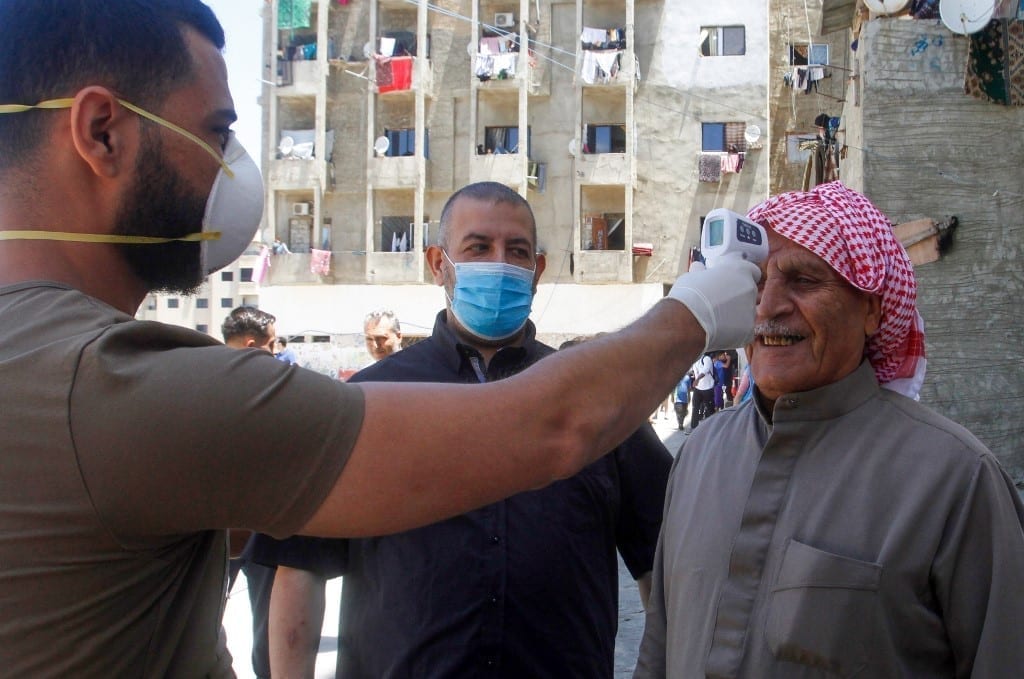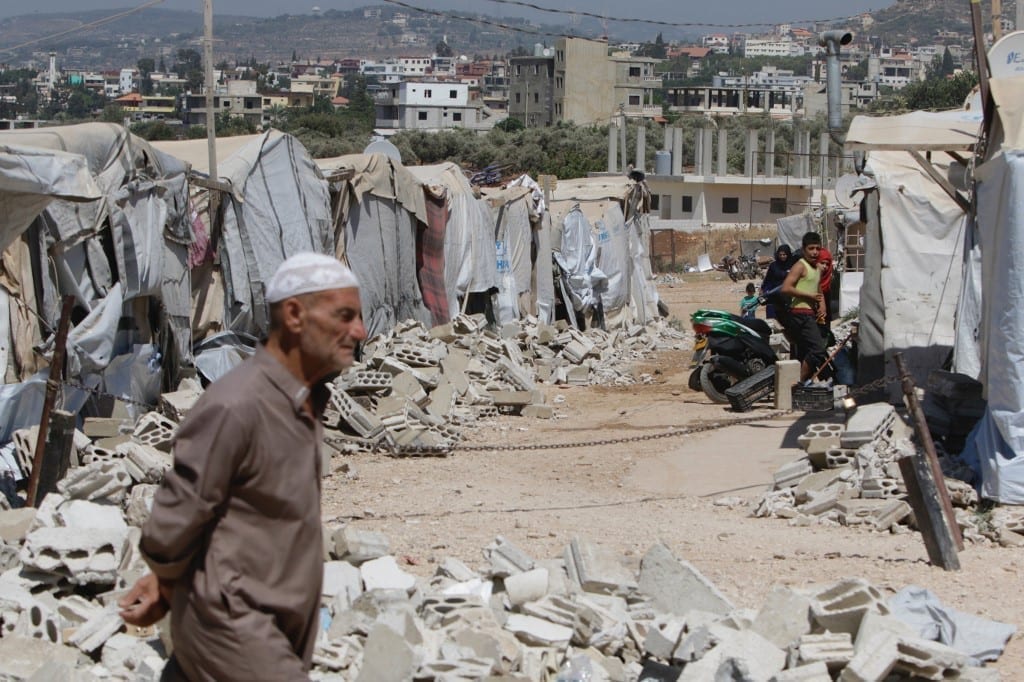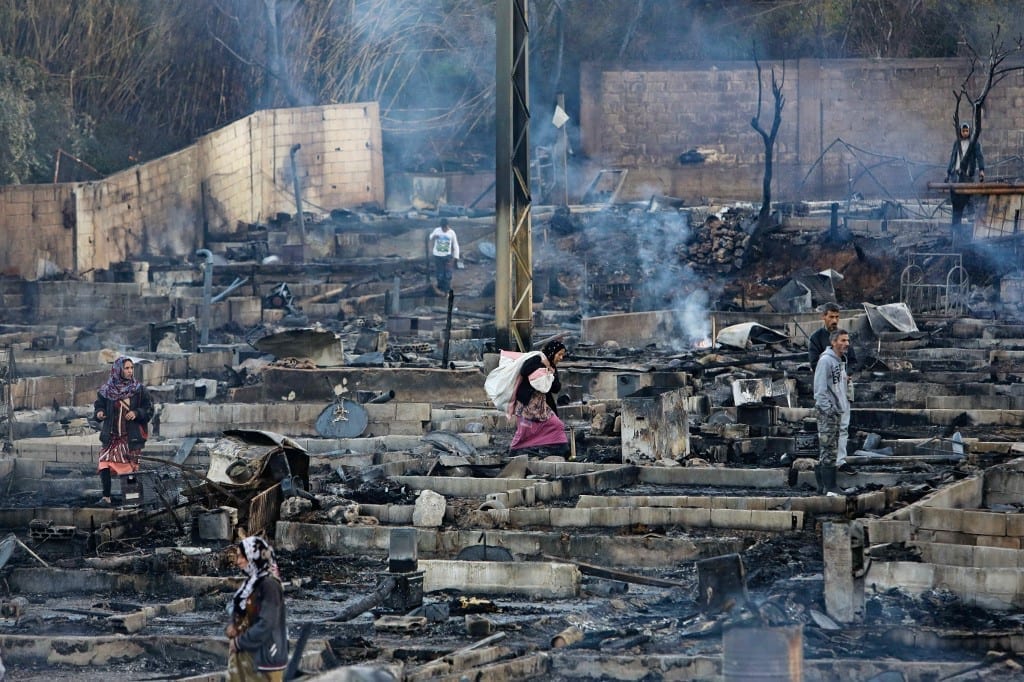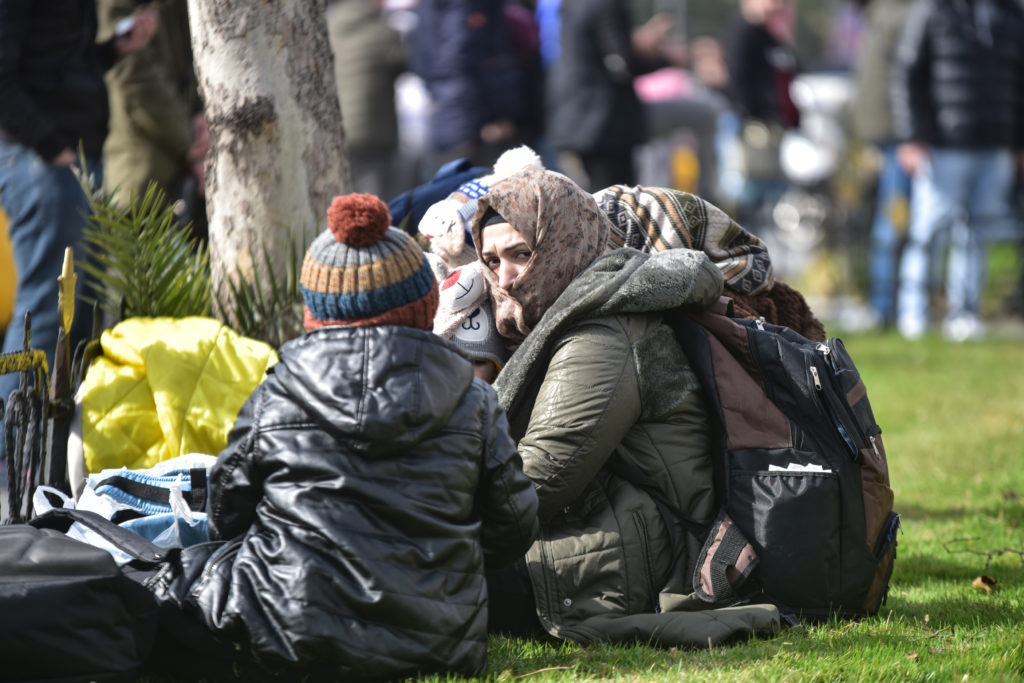Loujein Haj Yousef - Fatima Othman

On February 21, 2020, Lebanon announced its first Coronavirus case. To rub salt in the country’s wounds that already bear the brunt of the financial and economic crises that erupted due to the wave of mass anti-government protests.
According to the United Nations, The pandemic-control measures that were taken had exacerbated the Lebanese economic crisis. While the Syrian refugees found themselves facing a new challenge, even though they were already struggling to ensure a decent life for their families.
The number of Syrian refugees registered with the High Commissioner for Refugees UNHCR in Lebanon has reached 879,529 refugees at the end of November 2020 [3]. On the other hand, the Lebanese authorities argue that their real number has exceeded one and a half million refugees. 1,369 of them contracted the virus, and 31 died, according to the “World Health Organisation”.
In this report, we try to probe further into the conditions of the Syrian refugees in Lebanon in light of the coronavirus pandemic. And answer the question: How has the return to Syria become a dream for most of them?
What Happened to Hassan?
The Syrian refugee Hassan Hassouna was laid off his work at the construction sites that were his only source of income, as the project was faltering a month after the first coronavirus infection in Lebanon was detected. Unfortunately, Hassan has no permanent job until now.
“Since I first came to Lebanon,” says Hassan, “I have worked as a daily laborer at the construction sites. Before the coronavirus outbreak, I used to work in a construction site and for 15,000 pounds per day (ten dollars). But the project owner stopped the work due to the economic crisis and the pandemic.”
Refugee families live on less than 308,728 Liras per person per month ($ 42).
The 40-year-old Hassouna fled to Lebanon in 2012, and since then he has been living with his family, which consists of his wife and five children, in a rented house in Ain al-Hilweh camp, in the northern city of Sidon.
Before he sought asylum in Lebanon, Hassouna owned a cafe in the city of al-Qusayr. When asked about the reasons that triggered him to leave Syria, he says, “I left for fear of being arrested as I am opposed to the regime.”
Admittedly, Hassouna was not the only Syrian refugee who has lost his job in Lebanon owing to pandemic repercussions. Moreover, The International Labor Organisation study shows that 60% of the Syrian refugees have been permanently laid off from their jobs.
After Hassouna lost his work in construction, his income froze at 30,000 pounds (four dollars) a day, which he earned from helping the owners of banana wine shops near his house. In addition to what his wife was earning from selling household food products, which is not a permanent income but rather “On-demand.”
“We need one million pounds a month (135 dollars) to barely make ends meet, but we only make 500,000 pounds (68 dollars),” he says. 73% of the Syrian refugees in Lebanon are below the national poverty line. According to the UNHCR figures that revealed that “Their living conditions are getting worse after the movement restriction imposed as COVID-19 preventive measures.
Read Also:
89% of the Syrian refugees in Lebanon live below the abject poverty line, According to the “Vulnerability Assessment of Syrian Refugees in Lebanon 2020” study released on December 18, 2020, compared to 55% Syrian refugees only one year ago.
Furthermore, a study conducted by the UNHCR, WFP, and UNICEF revealed that the refugee families live on less than 308,728 pounds (42 dollars) per person/per month.


The refugee seeks to benefit again from the financial assistance program provided by the UNHCR, given that he used to get 25 dollars monthly for each member of his family, before being dismissed from the program upon getting a job. The refugee argues that his registration in the financial assistance program would help him secure food for his children during the crisis.
What worries Hassouna most is that the landlord of the two-room house he rents would raise the current rent, 100,000 pounds (14 dollars), “If this happened, I would be in deep trouble,” he says.
It is worth mentioning that 11% of Syrian refugees had to change their place of residence, being unable to pay the rent or looking for a more affordable and cheaper place, according to the figures published in the “Monitoring of the Effects of Economic Deterioration on the Refugees in Lebanon” report, issued by the UNHCR in October 2020.
In an endeavor to cut his costs, he tried to transfer his two sons from a private school to a public one. To his surprise, he found out that the private school whose fees he has been paying, two million pounds (270 dollars) a year, and teaches the Syrian curriculum was not recognized by the Lebanese Ministry of Education.”
“The only solution is to return to Syria, where my children could keep studying, and we could save some expenses.” Nevertheless, it is a hard choice and creates many challenges. First of which is the Syrian government’s decision that legally binds every citizen who wishes to come back to Syria to exchange 100 dollars into the Syrian pounds, according to the official exchange rate, which is significantly less than the real sum of money value.
The decision was issued in July 2020, in the pretext of assisting the state to save foreign exchange reserves.
Worst still, is that Hassouna is afraid of being arrested, he says, “I miss my country very much, and I wish I had money to go back home, but my financial situation on one hand, and my fear of being arrested made me reluctant to return.”
In mid-March 2020, the Lebanese authorities closed its borders with Syria as part of the Coronavirus-control measures. The Syrian regime closed its borders with Lebanon on March 22, 2020, in conjunction with the detection of the first Coronavirus case.
The borders were opened on exceptional days for the Syrian refugees who wish to return, without either the Lebanese or Syrian authorities announcing the number of the returnees.
5% of the refugees are planning to leave Lebanon, according to the Economic Effects Monitoring Report, 18% of them are considering the idea of going back to Syria, while 82% think of leaving to another country.


The Dire Condition
In 2013, Syrian Abdullah Hazaa (36 years old) and his family fled to Lebanon after battles intensified in the city of Qusayr where they used to live. Upon his arrival, one of his relatives took him to Rayhanah camp in Akkar governorate, where the family stayed in a tent until they were expelled from it in May 2020.
The refugee initially tried to work in the sewing profession, but the high cost of the equipment put a spoke in his plans, so he looked for a job in the field of construction. He says, “I worked as a daily wage earner in construction for 10,000 pounds a day. This was the first time for me to work in construction,” Indeed, he faced a hard time finding work because he did not have a residency permit on Lebanese territory.
Lebanese Law prevents Syrians who have illegally entered the country from having a job.
In addition to his intermittent work, the family relied on the financial assistance they received from the Commission, which amounts to $10 per person/per month “A sum of money that is hardy can meet even our necessities,” he says. The “difficult” economic situation has also prevented Hazzaa from sending his children to school, which made him deeply sorry.
On April 18, 2020, Hazzaa accompanied his pregnant wife to a hospital in northern Lebanon. Only to discover that she had contracted “Coronavirus.”
“She stayed in the hospital for 15 days. Doctors refused to deliver the baby because they were afraid of the infection. In the end, one of them agreed to perform the operation,” Hazzaa told us. He borrowed the cost of the operation, which is 600,000 pounds, from a friend.
5% of the refugees plan to leave Lebanon, according to the Economic Effects Monitor, of whom 18% have no problem returning to Syria, while 82% are seeking to leave to a third country.
On May 1, 2020, his wife gave birth to a child, making the number of his children seven, the oldest of whom is 13 years old. Three days later, the refugee and his wife returned to the camp with their baby to be faced with their expulsion decision
In a statement, Human Rights Watch criticized the “discriminatory” measures imposed by Lebanese authorities on Syrian refugees, as part of its pandemic control measures.
“We were expelled from the camp after they suspected that my wife and I had contracted coronavirus, so I and my children left, even after we underwent the test and found out that we were not infected, we were not allowed to return,” he said.
The Corona test costs 200,000 pounds ($27), a sum that a refugee could never have, but a charity organization helped him pay for it.
Matters become more complicated with the movement restriction imposed on the Syrians in Arsal and other municipalities in Akkar and other Lebanese regions, which makes going from one area to another to carry out the “Coronavirus” test a difficult and conditional issue.


Curfews measures have accompanied the outbreak of the virus in Lebanon, amid weak preventive capabilities and the challenges in controlling situations, especially in poor and neglected areas where camps are often spread.
The Hazzaa family lives in a rented underground warehouse. He says, “The place is dark and humid, but it protects us from the cold winter. The rent is 150 thousand pounds (20 dollars), but I no longer could pay it. The warehouse owner is not pressing me, because he knows the dire condition we are in.”
For six months now Hazzaa could not get any job, while everyone is reluctant to hire him after a rumor that he suffered from Coronavirus. Today he depends entirely on what he receives from the Commission.
He wishes to return to Syria, but what prevents him, as he says, is that “There is no place to go to, my house was destroyed, I do not even have the money to go back, and I am afraid that I might be arrested upon my return.”
According to theUnited Nations report released in September 2020, about 11% of the refugees suffer from poor conditions of their tents, 40% are unable to cover the cost of living, and 50% suffer from high prices.
The tests of the “Coronavirus” (PCR) inside the refugee camps in Lebanon are limited to a few exceptional cases that cannot cover the amount of danger that the pandemic may cause inside the camps, or even the transmission from one tent to another. International associations and organizations operating in refugee camps are unable to finance necessary random and periodic examinations in these overcrowded camps, which lack many necessary humanitarian needs.
Read Also:








